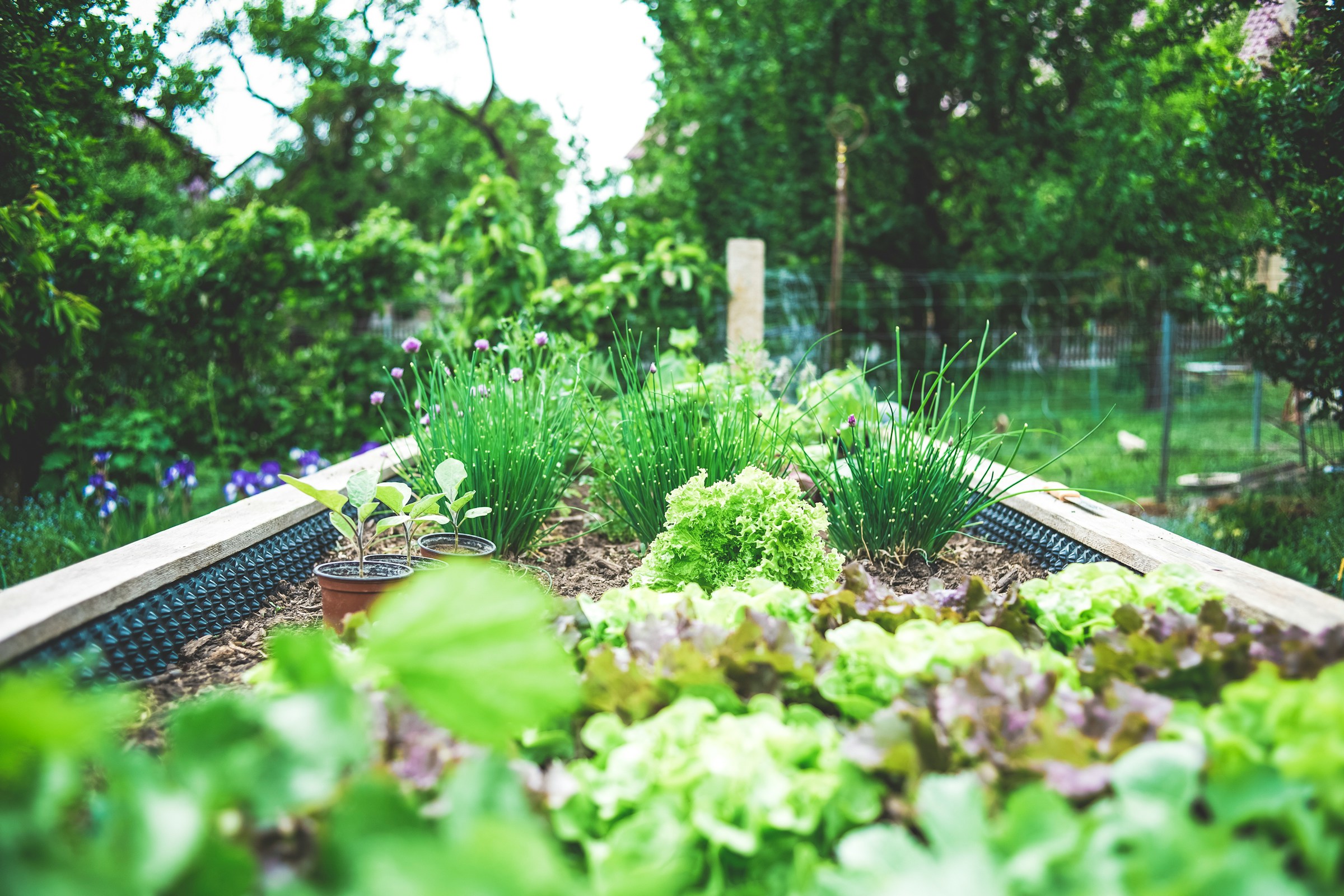Top 10 Raised Bed Ideas for Your Vegetable Garden

Introduction
Raised beds are gardening containers made from materials like wood, metal, or stone and are elevated above the ground.
Materials for Raised Beds
When constructing raised beds, you can use materials like wood, composite, metal, stone, brick, concrete blocks, and recycled materials.
Ideas for Designing Raised Beds for a Vegetable Garden
Here, we’ll discuss 10 raised bed ideas for your vegetable garden:
1. Standard Rectangular Beds
Standard rectangular raised beds are simple and effective. Common sizes are 4×8 feet or 4×6 feet, with heights of 12 to 24 inches. Use durable, rot-resistant materials like cedar, redwood, or composite boards. Avoid treated lumber, as it may leach chemicals into the soil. Choose a spot that receives at least 6-8 hours of sunlight daily.
Good drainage is essential. Mix high-quality soil with compost and other organic matter, such as 1/3 compost, 1/3 topsoil, and 1/3 peat moss. Use screws or metal brackets to secure the corners for stability. Regularly check for pests and diseases, and replenish the soil with compost or organic matter as needed.
2. Tiered Beds:
Tiered raised beds offer enhanced drainage and a visually appealing layout. Decide how many tiers you want—two, three, or more based on space and design preferences. Ensure each tier is large enough to accommodate the plants you intend to grow. Common materials include wood, stone, brick, and concrete blocks.
Level the ground where the base tier will sit for stability, and ensure proper sloping or drainage gaps between tiers to allow excess water to flow away. Select plants that match the growing conditions of each tier, placing larger vegetables on the lower tiers and smaller or more delicate plants on the upper tiers.
3. L-Shaped or U-Shaped Beds:
L-Shaped Beds: These are ideal for utilizing corners and creating a garden layout around existing structures. They provide easy access to all parts of the bed from the open sides and are useful for separating different types of vegetables. Determine the dimensions based on available space and plant needs. Use materials like wood, metal, or composite boards, and ensure stability and level alignment. Fill with a good soil mix and ensure proper drainage, especially at the junctions.
U-Shaped Beds: U-shaped beds allow easy access to plants and are great for larger areas. They create garden islands in the middle of open spaces and can be used for growing a variety of plants. Construct the two parallel arms of the U-shape first, then connect the arms with a back section. Ensure there is adequate drainage and sunlight. Place taller plants in the back of U-shaped beds to avoid shading smaller plants.
4. Circular or Hexagonal Beds:
Circular Beds: These are easier to work with and are great for reaching plants without stepping on the soil. They can be designed to have a central planting area with pathways radiating outward.
Hexagonal Beds: Hexagonal beds maximize space efficiency and provide a more organized layout, especially in larger gardens. They offer a visually appealing design and can fit together like a puzzle to cover more area with less wasted space.
5. Vertical Beds:
Vertical beds are great for growing vegetables in limited spaces. Use stacked planters arranged in a pyramid or cascading style for leafy greens, herbs, and small root vegetables. Build or buy vertical frames with multiple levels, or attach sections of gutters to a wall or fence to create narrow but deep beds.
Vertical fabric pockets or hanging planters are excellent for growing herbs and small vegetables. Hanging pots are well-suited for trailing vegetables like cherry tomatoes or small peppers.
6. Vertical Raised Beds:
Construct vertical raised beds mounted on a wall or freestanding structure. These beds are ideal for growing a variety of vegetables, including those needing more depth like carrots or beets.
Use old pallets by filling the slats with soil and plants, a cost-effective method that allows planting a range of vegetables. Consider hydroponic vertical towers for growing vegetables without soil.
7. Modular Beds:
Modular beds are versatile and customizable. Use interlocking planter boxes arranged in various configurations. Stackable containers can create vertical growing space or be spread out horizontally. Modular raised bed kits come with adjustable panels.
Garden bed frames can be built or purchased to be filled with soil. Portable beds allow easy repositioning, and pre-fabricated sections made from wood, metal, or plastic can be easily reconfigured.
8. Planter Boxes:
Planter boxes are containers great for growing vegetables in a controlled environment. They are perfect for gardens with limited space, poor soil conditions, or urban settings.
Planter boxes are versatile and practical, making it easier to manage space and plant health while adding aesthetic value to your garden.
9. Sunken Beds:
Sunken beds are a gardening technique where the growing area is dug below the surrounding ground level. They offer improved drainage, an extended growing season, better soil quality, and reduced wind exposure. Choose a location with good sunlight and appropriate drainage.
Dig out the area to the desired depth, usually 6-12 inches, and prepare the soil with compost and organic matter. Beds can be rectangular, circular, or irregular in shape. Add paths around the sunken bed for easy access, manage water effectively, and incorporate a drainage system if needed.
10. Wicking Beds:
Wicking beds are self-watering garden beds designed to efficiently manage water and ensure consistent soil moisture. These beds have a built-in water reservoir at the bottom, allowing water to move upwards into the soil through capillary action.
Be mindful of overflow and drainage to prevent over-watering. Old barrels, crates, or large pots can be used for a rustic look. Consider sunlight exposure, accessibility, and the types of vegetables you plan to grow when designing your raised beds.
Conclusion
Raised beds are a highly effective gardening method. They offer improved soil conditions, better drainage, and easier access for gardeners. If your garden’s soil conditions are challenging or you are looking to optimize growing space, raised beds can be very useful.
